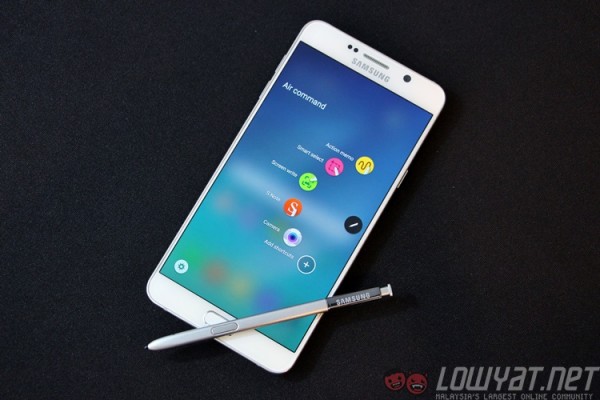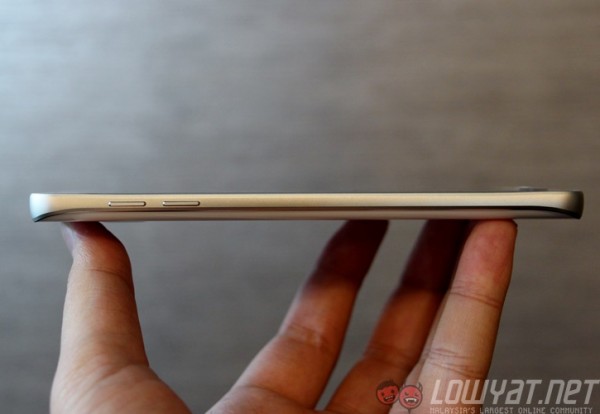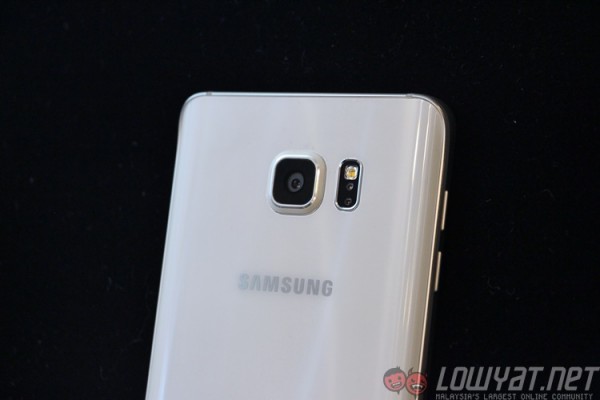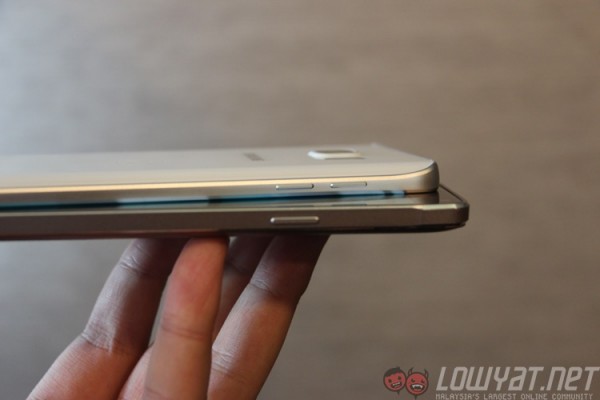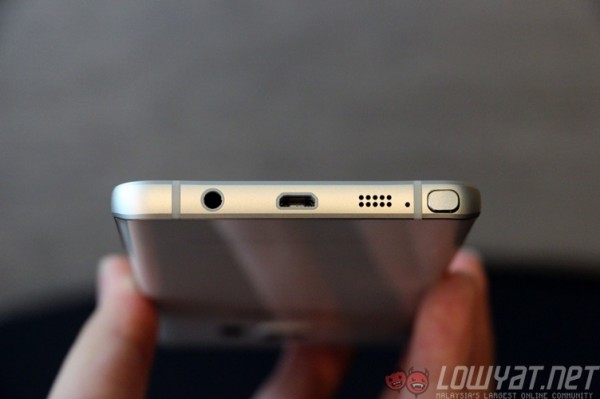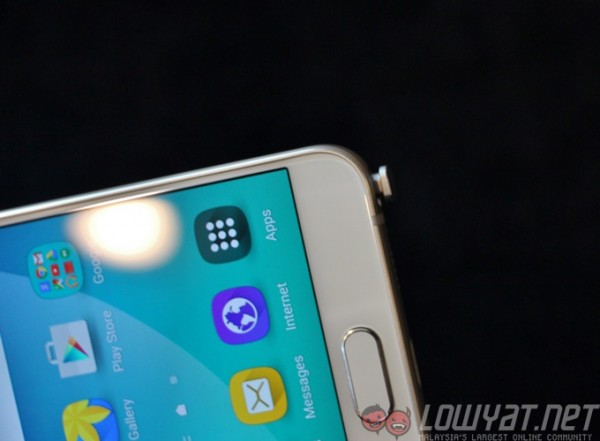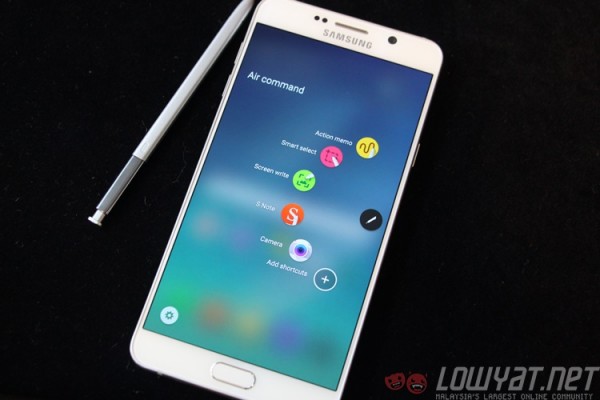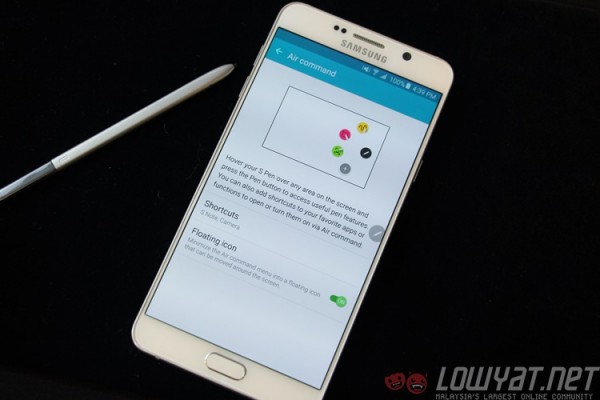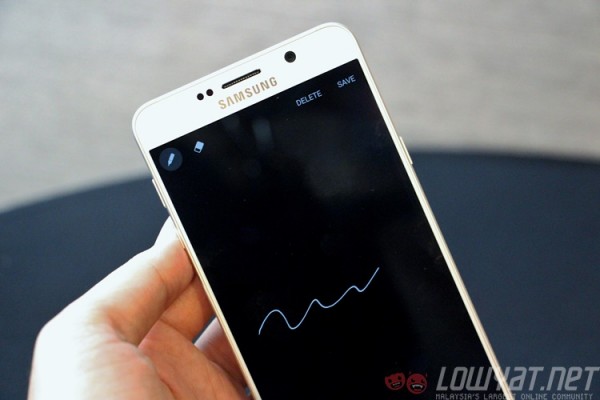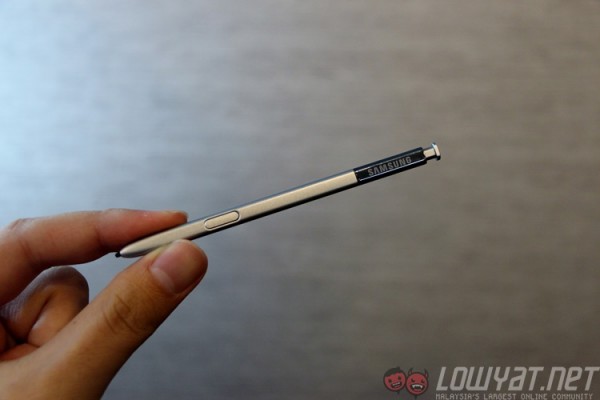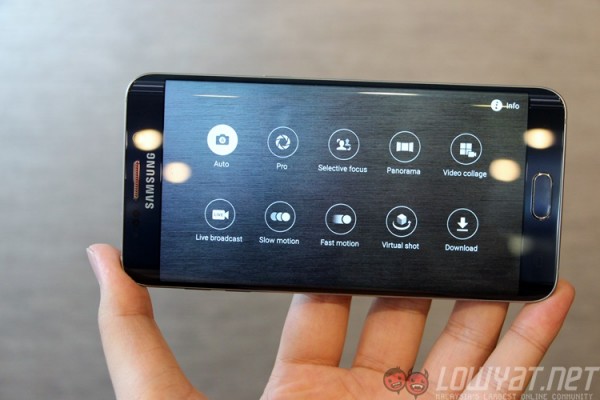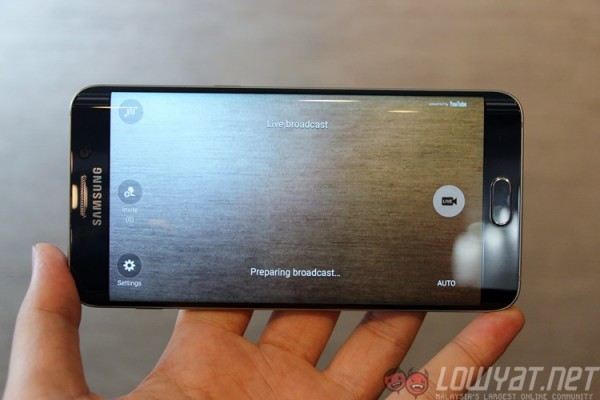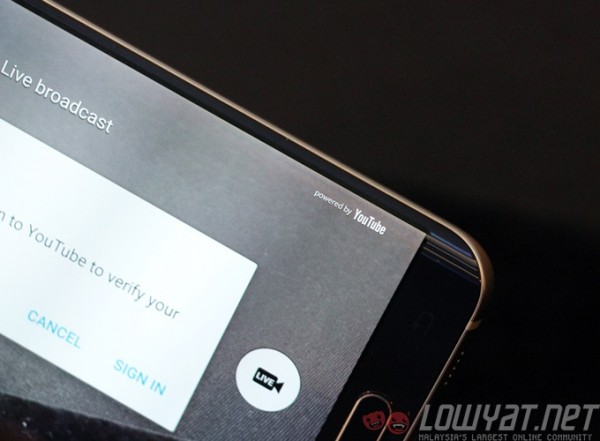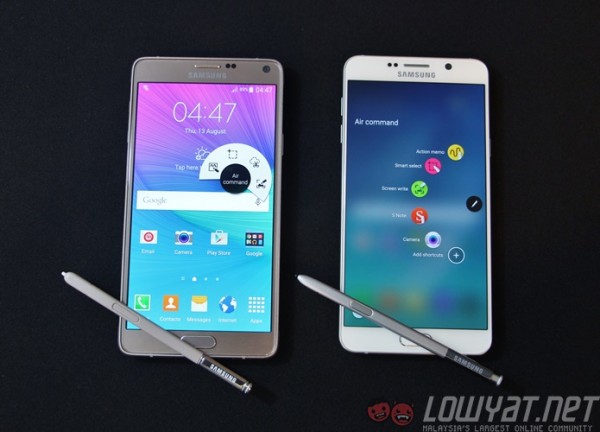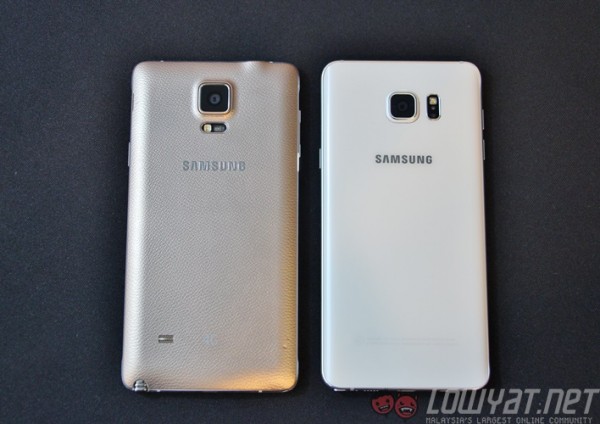
Samsung’s latest Galaxy Note is here. The Galaxy Note 5 has been officially unveiled a few weeks earlier from its traditional IFA launch at a separate Samsung Unpacked here in New York, where we were able to take a closer look at the company’s greatest flagship phablet yet.
Let’s start off with the design. For a long time, Samsung’s Galaxy S and Galaxy Note series were never so similarly designed – each had its own distinctive design with every new iterations. It appears that strategy has been scrapped in favour of a sleek new design language that debuted with the Galaxy S6. Gone are the faux leather elements from the Note 3, or the practicality of a removable back cover. If anything, the Note 5 looks and feels startlingly similar to the Galaxy S6.
In a way, this approach is reminiscent of Apple’s iPhone strategy, where one design language permeates across two different-sized devices. To a certain extend, this synergy in design works, too, because my first impressions of the Galaxy Note 5 is very positive – aesthetically, this feels like a better version of the Galaxy S6. The larger size works in its favour – where the S6’s small frame had a tendency to be slippery, the Note 5 has a larger surface area that improves grip. The added weight also adds a more solid feeling on top of the rigidity offered by the use of metal and glass.
Compared to the Note 4, it is to be expected that the Note 5 would be thinner. What’s surprising is how the Note 5 is also lighter and has a smaller footprint compared to its predecessor. Samsung has maintained the same 5.7-inch screen and fitted it onto a smaller device.
Also, the Note 5 is surprisingly comfortable to hold. This is largely due to the curved edges and rounded sides that is reminiscent of the front of the S6 edge. It is also very similar in looks to Xiaomi’s Mi Note phablet, which also has a “3D curved” glass back. One major difference though: where the Mi Note’s chamfered edges can be a little sharp, the softly rounded sides of the Note 5 sits very comfortably in the hand.
The new design of the Note 5 also means a new housing and release mechanism for the S Pen. The S Pen housing is now flush at the bottom of the device, and is released using just by pressing the bottom of the S Pen, where a tiny portion of it will eject, allowing you to pull it out. This change may be minor, but it’s also very effective and adds a symbolic spin of an electronic writing device mimicking that of a ballpoint pen.
As for the software, the S Pen is naturally more powerful than ever. What should add in its usability is the simple addition of customisation options on the Air Command function. You can now add app shortcuts to Air Command, allowing you to list more than just S Pen-specific functions. You can add up to three apps within the Air Command screen.
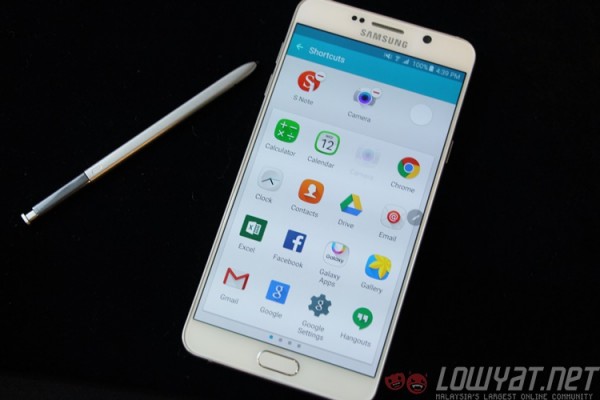
Samsung also increased the note-taking usability of the S Pen with a new Screen-Off Memo feature. On the Note 5, you can scribble quick notes on the device even when the phone is locked by simply taking out the S Pen and scribbling on it. Once you’re done, unlocking the phone will lead you straight to the S Note app, with your scribbles on it. This is exceptionally useful as it removes the need to unlock the device and opening S Note, saving precious time in the process.
Another area that Samsung tackled with the S Pen is with PDF files. The S Pen now has the ability to scribble on and highlight text on PDF documents…and saving it as a PDF file. One particularly useful scenario for this is when a user has to sign a document: usually, it involves printing out the document, manually sign it before scanning it again. With the Note 5, you just sign on the dotted line and tap Save.
On the other hand, while the hardware of the Note 5 is definitely an upgrade from the Note 4, it is surprisingly similar to the Galaxy S6. It has a similar Exynos 7420 chipset with the same 2.1GHz + 1.5GHz clock speed, a Quad HD Super AMOLED display, 16MP rear sensor with OIS, 5MP front camera, and wireless charging. The main difference here is the 4GB of RAM, larger 5.7-inch display and a 3,000mAh non-removable battery that’s actually smaller than the Note 4.
Samsung also baked in a live stream app straight into its camera app. Called Live Broadcast, the feature automatically links up to YouTube to create a live stream that’s accessible to any device. Users can be connected to WiFi or at least a 3G network to use this function. Performance is of course based on the stability of the connected network, but from the live demos it appears to work seamlessly.
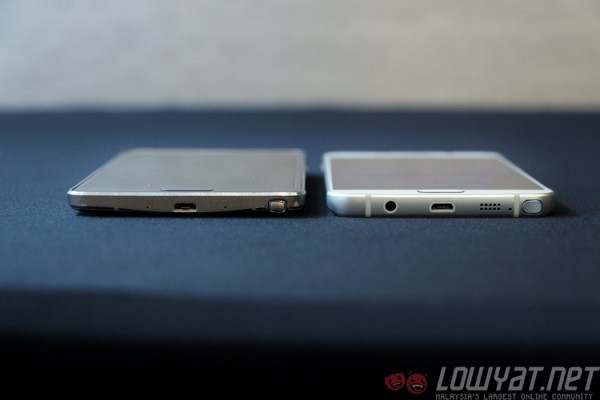 A comparison of Samsung’s Galaxy Note 5 (right) and the Note 4 (left)
A comparison of Samsung’s Galaxy Note 5 (right) and the Note 4 (left)
Since the Galaxy S6, Samsung has worked overtime in improving its image as a phone maker. The S6 was one of the best and most critically-acclaimed smartphones it’s ever produced, and it appears Samsung is sticking to the same formula for the Galaxy Note 5. It looks and feels every bit a premium smartphone, while its software features add focused practical solutions instead of being an assortment of gimmicky functions.
How the world responds in this exceptionally competitive industry would be fascinating to watch.
Follow us on Instagram, Facebook, Twitter or Telegram for more updates and breaking news.



